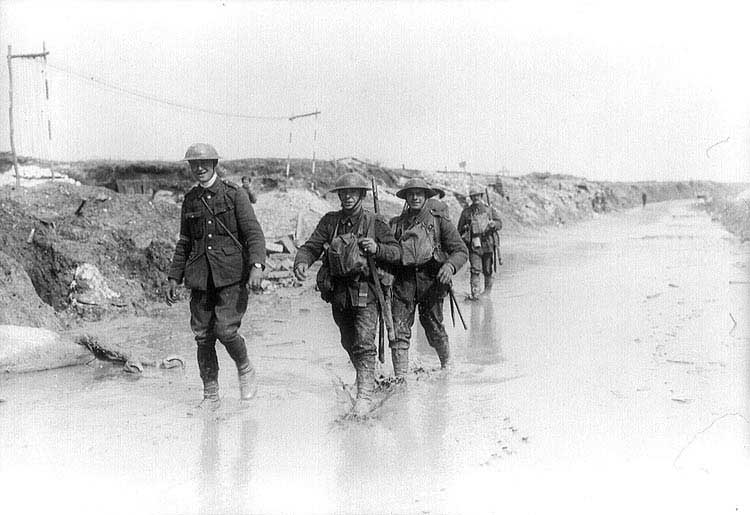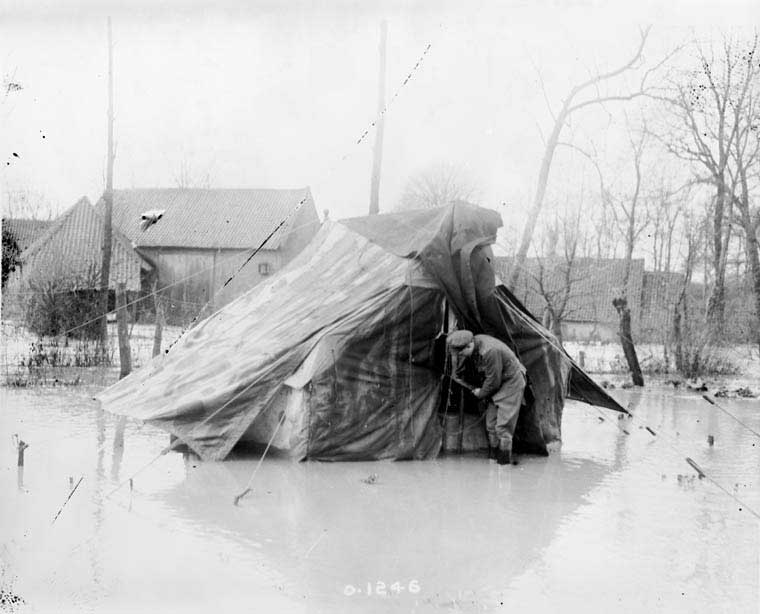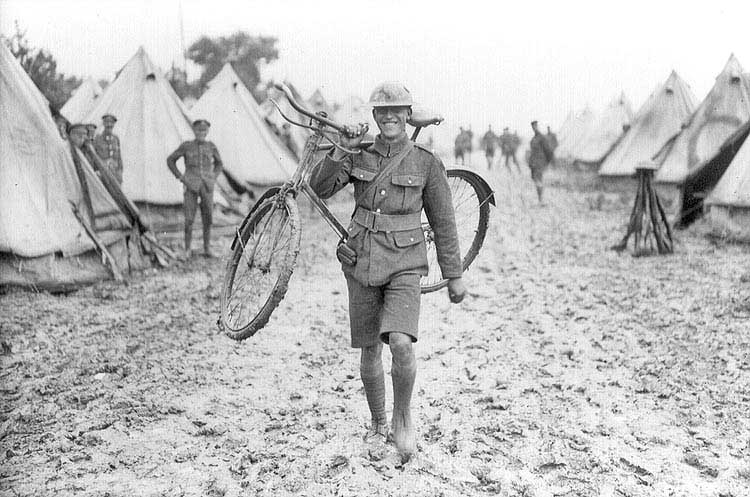Life in Combat Boots
This publication is available upon request in alternate formats. PDF Version
More than one hundred years ago, thousands of Canadians traded in their comfortable civilian shoes for combat boots in the First World War. They traded in their business shoes, farming boots, lumberjack boots, fishing boots, student shoes, and all sorts of footwear. Little did they know that they were trading them in for likely the most uncomfortable shoe they would ever wear.
Canadian boots that were given out early in the First World War in 1914 were not able to endure the rigours of war in the muddy wet trenches. The soles of those early boots dissolved in wet conditions - and the first weeks in war were very wet! By 1916, the Canadian-made boots were replaced by British boots. The standard combat boot worn by Canadians was called the “Ammunition Boot”. These were dark coloured ankle-high boots made of textured leather.
Soldiers also wore puttees which are strips of cloth worn wrapped around the lower leg in a spiral pattern, from the ankle up to below the knee. They provided ankle support and helped prevent dirt and debris from getting into the boots. Khaki-coloured wool puttees were worn with the Canadian Ammunition Boot. At the time, Newfoundland was not a part of Canada, and interestingly, the Newfoundland soldiers wore puttees that were blue, giving them the nickname “Blue Puttees”.
The boots were designed to be hard-wearing and long-lasting rather than comfortable. The combat boots turned out to be a most uncomfortable experience. Soldiers wore the boots many days standing in the mud, wet trenches and chalky tunnels. Wet socks inside, combat boots were covered in mud, sometimes blood and possibly torn by barbed wire. Boots were often bombed at and shot at.
The trenches of France and Belgium were muddy and constantly filled with water. As a result, soldiers were prone to a painful condition called “trench foot”. Trench foot is a medical condition caused by prolonged exposure of the feet to damp, unsanitary, and cold conditions. The only cure was for them to keep their feet dry and change their socks regularly. Soldiers in the trenches were supposed to have at least three pairs of socks and change them at least twice a day.
Officers on the front lines sent S.O.S. messages calling for socks to be sent to the troops. They were in huge demand. Many patriotic women’s organizations emerged. Called working “bees”, groups of women gathered across Canada to knit socks for soldiers in the trenches. Thousands of knitted socks were sent overseas. Notes and letters were often attached with messages of cheer written on them.
Sadly, almost 3,600 Canadians died at the Battle of Vimy Ridge, and 3,600 pairs of combat boots did not make it home to Canada to be traded back in for their comfortable civilian shoes. Next time you change footwear, take a moment to reflect on those brave Canadians who served in the First World War.
- Date modified:


